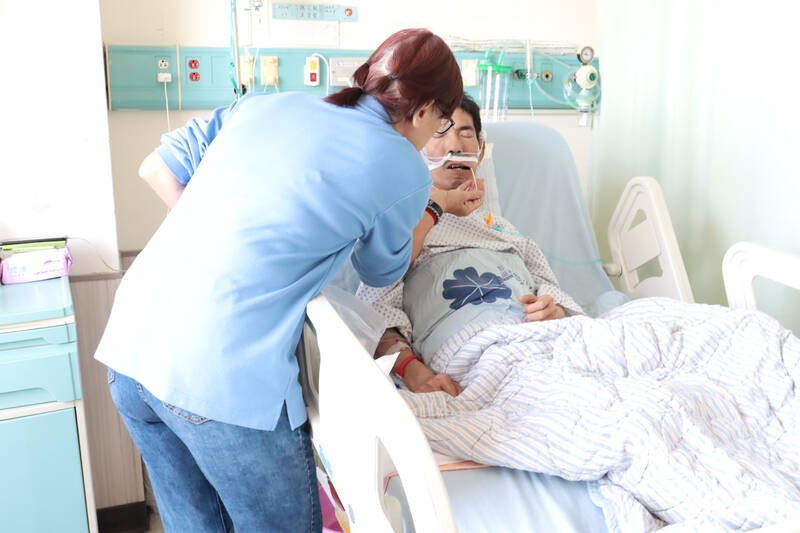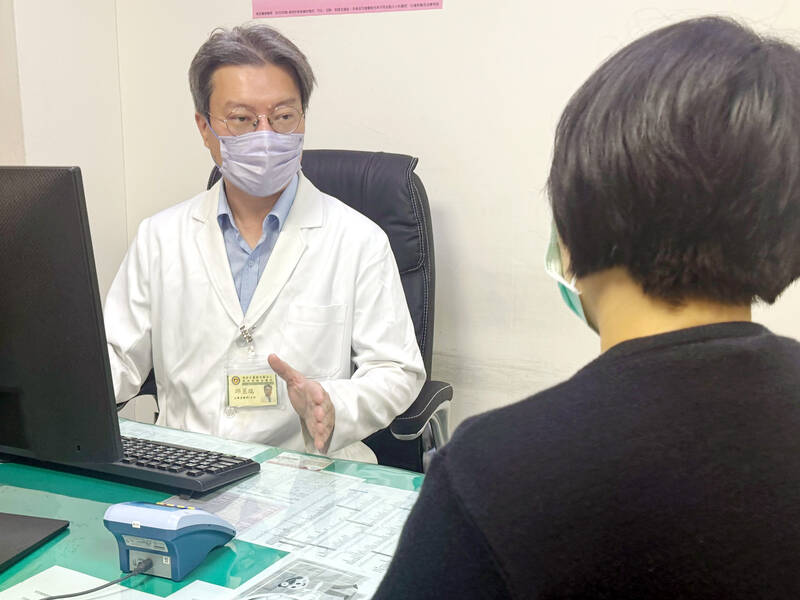On April 26, The Lancet published a letter from two doctors at Taichung-based China Medical University Hospital (CMUH) warning that “Taiwan’s Health Care System is on the Brink of Collapse.” The authors said that “Years of policy inaction and mismanagement of resources have led to the National Health Insurance system operating under unsustainable conditions.”
The pushback was immediate. Errors in the paper were quickly identified and publicized, to discredit the authors (the hospital apologized). CNA reported that CMUH said the letter described Taiwan in 2021 as having 62 nurses per 10,000 people, when the correct number was 78 nurses per 10,000 people. The Lancet letter also confused COVID death data with the rate of patients with the COVID omicron variant requiring intubation. The Minister of Health and Welfare, Chiu Tai-yuan (邱泰源), said that the letters’ criticisms were unfair to health care workers.
These errors permitted the health care system to dismiss the letter without addressing its core claims. The authors cited local nursing association data showing that 78 percent of nurses must work overtime. They also cited a 2019 study that high levels of burnout among health-care professionals drive attrition rates of 12 percent annually. Finally, they noted that strict health-care cost controls have led to stagnant wages in the industry, “with real wages declining by 18 percent since 2000.”

Photo courtesy of Chang Gung Hospital
Not surprisingly, critics did nothing to address these claims, because they are largely true and have been for years. Statistics from the Taiwan Union of Nurses Association (TUNA) show that over 300,000 licenses have been issued, but only 190,000 nurses were actually working as of Dec. 31, 2023, a situation I first heard discussed by high-level nursing educators over a decade ago. Because the system has a permanent nursing deficit and refuses to make meaningful changes to its work arrangements, hospitals force nurses to work overtime. This leads to periodic protests by nurses, after which nothing happens and the system returns to permanent crisis mode.
A 2022 statement from the Taiwan Association of Emergency Medicine made arguments similar to those in The Lancet letter. One fallout from the nursing shortage is ward closure. With wards closed, critically ill patients are forced to remain in the emergency ward, reducing the ability of emergency wards to serve the public. Hence, one important recommendation of the statement was an adjusted payout system to fund emergency wards and ward re-opening when demand is high.
GLOBAL BUDGET PAYMENT SYSTEM

Photo courtesy of Chang Gung Hospital
The payout system is the subject of much criticism. The Lancet letter exampled “rigid global budget payments” as a major system problem. A November journal article in the Journal of the Formosan Medical Association on the woeful state of Taiwan’s hospital pediatric care system since the pandemic recommended that health care expenditure as a percentage of GDP be increased, and the National Health Insurance Act (全民健康保險法) be amended “to eliminate the global budget payment system.”
The global budget system was implemented in 2000. “At the outset,” the writers of the piece on pediatric care note, planners “anticipated that the system would be operational for a limited duration, primarily to address the financial crisis. However, the system’s utility to politicians was such that it has remained in place for 24 years.”
The global budget system has two key features: a fixed budget, and a floating point cap. The cap adjusts downward as health care expenditures by front-line hospitals rise. For example, when those expenditures are low, it pays NT$1 for every NT the hospital claims. When hospital claims rise, the floating point figure falls (it is adjusted every three months), to as low as NT$0.6. This means that if the hospital claims NT$100,000 in expenses, it receives NT$60,000. Thus, the per-patient payout falls as the number of patients rises: the more patients a hospital services, the greater the cost it bears. This enables the government to keep the global health budget fixed and transfers the cost burden to hospitals, threatening their existence. The public doesn’t care because services are cheap, and politicians are happy because the budget is easy to “balance” and doesn’t become a constant political headache.

Photo: Ou Su-mei, Taipei Times
Most importantly, it doesn’t require new taxes.
The term “collapse” is often thrown around in discussions of the health care system, but it isn’t going to collapse. It is simply going to go bankrupt, eroding slowly away. At present wards are being closed, services are being curtailed, and health care professionals are seeking other options since hospitals must work them to death merely to stay afloat. This can continue for years. It has already.
REVENUE GENERATORS
The pernicious result of this budgetary pressure is the need for doctors to become revenue centers. When I had a problem with my knee and I became increasingly unable to walk, I saw a succession of doctors, each of whom recommended a different, expensive therapy. The last doctor said none of those would work, so why not just go directly to knee replacement? Luckily a friend suggested a simple change to my diet that worked.
Another pernicious effect: in a system where doctors are revenue generators, nurses are costs. That is the fundamental reason they are ruthlessly overworked. Yet another effect are caps on system use, unknown to the public until they are encountered. For example, as the Chinese-language Liberty Times (the Taipei Times’ sister newspaper) article observed last week, if a patient requires medicines after successful breast cancer treatment, the government only pays for two years. Everything after that is out-of-pocket.
The government treats the health care system the same way it treated Taiwan Power Co (Taipower, 台電), Taiwan Railway Corp (TRC) and many other government programs and agencies: it maintains them in a state of permanent crisis. It passes fixed budgets, keeping government payouts low and enabling taxes to remain absurdly low, and lets the entity in question pile up debts. In the health care system, the debt is absorbed by the hospitals as costs and by their staff in the form of lower salaries and unrelenting overwork. This is not sustainable. Since the rich and the now-retired miracle generation refuse to pay the taxes necessary to sustain the system, at some point the hospital system will have to be privatized somehow, and costs will skyrocket.
In May of last year, Chinese Nationalist Party (KMT) legislators proposed amending the NHI Act to say that when the floating point cap falls below 1, the government must make up the difference. That would move the nation toward a system in which hospitals were paid more or less what their costs are. That move was supported by eight major health care associations.
Hsueh Jui-yuan (薛瑞元), the health minister at the time, said the NHI’s global budget payment system might be harmed (wasn’t that the whole point of it?) and that it “should be further deliberated.”
It’s still being deliberated. It will be for years to come.
Notes from Central Taiwan is a column written by long-term resident Michael Turton, who provides incisive commentary informed by three decades of living in and writing about his adoptive country. The views expressed here are his own.

June 23 to June 29 After capturing the walled city of Hsinchu on June 22, 1895, the Japanese hoped to quickly push south and seize control of Taiwan’s entire west coast — but their advance was stalled for more than a month. Not only did local Hakka fighters continue to cause them headaches, resistance forces even attempted to retake the city three times. “We had planned to occupy Anping (Tainan) and Takao (Kaohsiung) as soon as possible, but ever since we took Hsinchu, nearby bandits proclaiming to be ‘righteous people’ (義民) have been destroying train tracks and electrical cables, and gathering in villages

Swooping low over the banks of a Nile River tributary, an aid flight run by retired American military officers released a stream of food-stuffed sacks over a town emptied by fighting in South Sudan, a country wracked by conflict. Last week’s air drop was the latest in a controversial development — private contracting firms led by former US intelligence officers and military veterans delivering aid to some of the world’s deadliest conflict zones, in operations organized with governments that are combatants in the conflicts. The moves are roiling the global aid community, which warns of a more militarized, politicized and profit-seeking trend

The wide-screen spectacle of Formula One gets a gleaming, rip-roaring workout in Joseph Kosinski’s F1, a fine-tuned machine of a movie that, in its most riveting racing scenes, approaches a kind of high-speed splendor. Kosinski, who last endeavored to put moviegoers in the seat of a fighter jet in Top Gun: Maverick, has moved to the open cockpits of Formula One with much the same affection, if not outright need, for speed. A lot of the same team is back. Jerry Bruckheimer produces. Ehren Kruger, a co-writer on Maverick, takes sole credit here. Hans Zimmer, a co-composer previously, supplies the thumping

Dr. Y. Tony Yang, Associate Dean of Health Policy and Population Science at George Washington University, argued last week in a piece for the Taipei Times about former president Ma Ying-jeou (馬英九) leading a student delegation to the People’s Republic of China (PRC) that, “The real question is not whether Ma’s visit helps or hurts Taiwan — it is why Taiwan lacks a sophisticated, multi-track approach to one of the most complex geopolitical relationships in the world” (“Ma’s Visit, DPP’s Blind Spot,” June 18, page 8). Yang contends that the Democratic Progressive Party (DPP) has a blind spot: “By treating any